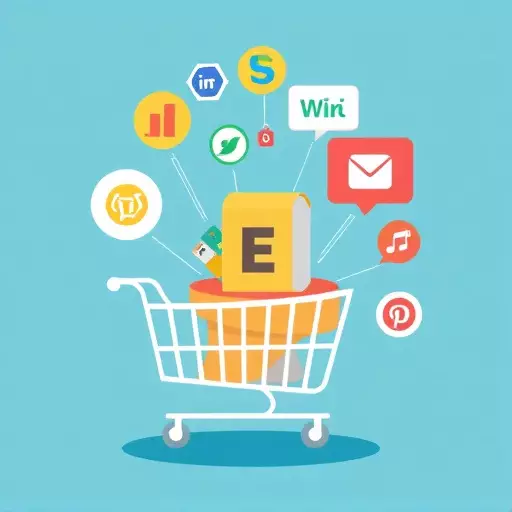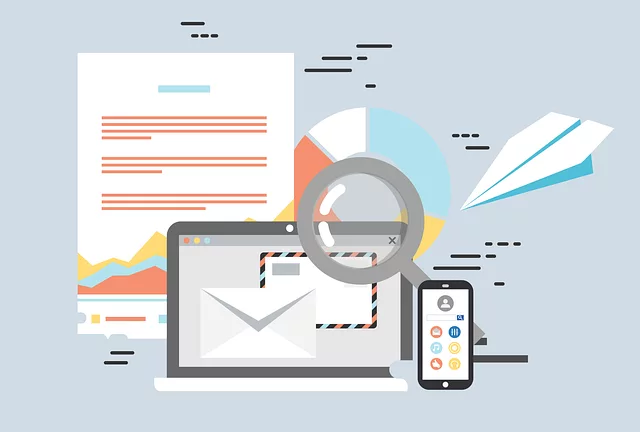This section explores how abandoned cart recovery strategies are a powerful tool for e-commerce businesses in Toledo, aiming to improve conversion rates and build customer relationships. Despite challenges like competition, data privacy, and evolving consumer behaviors, techniques such as dynamic email campaigns, retargeting ads, and personalized offers can overcome these hurdles. Effective strategies not only enhance e-commerce marketing benefits but also foster a loyal customer base. Success lies in understanding customer behavior, optimizing operations, leveraging personalization, and using data to refine campaigns, ultimately boosting sales and driving brand loyalty in the competitive Toledo market.
In today’s digital landscape, e-commerce marketers face a significant challenge with abandoned carts, costing businesses billions annually. Understanding abandoned cart recovery strategies is crucial for maximizing sales and customer retention. This article explores the various facets of this complex issue, from segmenting customers to offering incentives, focusing on effective e-commerce marketing tactics. We’ll delve into common challenges faced in implementation, highlighting the benefits of successful campaigns while providing a strategic roadmap to optimize your e-commerce business in Toledo and beyond.
- Understanding Abandoned Cart Recovery: The E-commerce Marketing Angle
- Common Challenges in Implementing Recovery Strategies
- Benefits of Effective Abandoned Cart Recovery Campaigns
- Customer Segmentation: A Key to Personalized Recovery Efforts
- Email Automation: Timing and Content Strategy
- Offering Incentives: Balancing Art and Science
- Measuring Success and Iterating for Better Results
Understanding Abandoned Cart Recovery: The E-commerce Marketing Angle

Understanding Abandoned Cart Recovery: The E-commerce Marketing Angle
In the dynamic landscape of e-commerce marketing toledo, abandoned cart recovery strategies are a game changer. These techniques aim to recapture potential customers who have shown significant interest in making a purchase but left their carts unfinished. By implementing effective abandoned cart recovery strategies, businesses can enhance customer engagement and boost sales. The benefits of e-commerce marketing include improved conversion rates and stronger customer relationships, as it allows retailers to provide personalized follow-ups and address any concerns or hesitation that may have led to the cart abandonment in the first place.
However, navigating the challenges in e-commerce marketing can be a complex task. High competition, data privacy regulations, and ever-evolving consumer behaviors present significant hurdles. E-commerce businesses must stay agile and adapt their recovery strategies accordingly. Through dynamic email campaigns, targeted retargeting ads, and personalized offers, retailers can foster trust and encourage customers to complete their purchases. These approaches not only capitalize on the benefits of e-commerce marketing but also help in building a loyal customer base that values tailored experiences.
Common Challenges in Implementing Recovery Strategies

Implementing abandoned cart recovery strategies can be fraught with challenges for e-commerce businesses, especially when trying to balance cost-effectiveness and customer experience. One significant hurdle is e-commerce marketing toledo: identifying the right channels and messages that resonate with potential customers who have shown initial interest but then left their carts unattended. Many strategies often fall into the trap of being too generic or failing to consider individual shopping behaviors, leading to subpar engagement and returns on investment.
Moreover, benefits of e-commerce marketing like personalization and timely communication are easily overshadowed by technical issues such as poorly designed email workflows or outdated website functionalities that hinder successful recovery attempts. These challenges underscore the importance of a comprehensive understanding of customer behavior throughout the purchase journey and continuous optimization of both frontend and backend operations to maximize the effectiveness of abandoned cart recovery campaigns.
Benefits of Effective Abandoned Cart Recovery Campaigns

Effective abandoned cart recovery campaigns offer a multitude of benefits for e-commerce businesses. By implementing strategic initiatives to reengage customers who have left items in their carts, retailers can boost sales and revenue without significantly increasing marketing costs. These campaigns address the common challenges faced in e-commerce marketing, such as customer uncertainty or apathy towards completing purchases online.
Through personalized emails, targeted ads, and timely reminders, businesses can recapture potential sales and foster a sense of urgency. This not only improves conversion rates but also enhances customer satisfaction by demonstrating understanding of their needs and concerns. Moreover, successful abandoned cart recovery strategies provide valuable insights into consumer behavior, enabling retailers to refine their e-commerce marketing approaches for future campaigns.
Customer Segmentation: A Key to Personalized Recovery Efforts

In the realm of e-commerce marketing, customer segmentation plays a pivotal role in enhancing abandoned cart recovery strategies. By dividing your customer base into distinct groups based on demographics, purchasing history, and browsing behavior, you can tailor personalized recovery efforts that resonate with each segment. This strategic approach allows for more effective communication and increased chances of reclaiming potential sales. For instance, sending targeted emails featuring relevant products to customers who abandoned their carts due to price concerns can prove more successful than a one-size-fits-all strategy.
The benefits of e-commerce marketing are manifold, but it’s not without challenges. Segmenting customers effectively requires robust data analytics and insights. Moreover, maintaining a delicate balance between personalization and invasiveness is crucial. Overly aggressive recovery campaigns may alienate customers, counteracting the positive effects of personalized approaches. Therefore, e-commerce businesses must invest in sophisticated marketing tools and continually refine their strategies to overcome these challenges, leveraging the power of customer segmentation to maximize sales and foster stronger customer relationships.
Email Automation: Timing and Content Strategy

Email automation is a powerful tool for abandoned cart recovery strategies in e-commerce marketing toledo. The key lies in strategic timing and tailored content. Sending emails immediately after a customer abandons their cart can be effective, as it captures the user’s interest while the product is still top of mind. However, it’s crucial not to overwhelm customers with too many follow-up messages; spacing out emails by 30 minutes to an hour can make a difference.
The content of these recovery emails should address the specific challenges in e-commerce marketing. Offer incentives like discounts or free shipping to motivate customers to complete their purchase. Personalize the message by mentioning products left in the cart and provide quick links to view them again. Additionally, include customer testimonials or product reviews to build trust and confidence, enhancing the overall e-commerce marketing experience.
Offering Incentives: Balancing Art and Science

In the realm of e-commerce marketing, abandoned cart recovery strategies are a game-changer. By offering incentives, businesses can effectively balance the art and science of customer engagement. The art lies in understanding what motivates customers—be it discounts, free shipping, or exclusive access to new products. The science involves analyzing shopping patterns and behavior to deploy these incentives at precisely the right moment, such as when a customer abandons their cart. This strategic approach not only enhances the customer experience but also fosters brand loyalty, ultimately driving sales and maximizing the benefits of e-commerce marketing.
However, navigating this strategy comes with challenges. E-commerce marketers must grapple with ensuring incentives are compelling without appearing desperate, and timing is crucial to avoid annoying customers. Moreover, personalization is key; sending targeted offers based on individual shopping histories can significantly improve recovery rates. Despite these challenges, successful implementation of abandoned cart recovery strategies can lead to substantial improvements in conversion rates, making it a vital component of any robust e-commerce marketing plan in Toledo or beyond.
Measuring Success and Iterating for Better Results

Measuring Success and Iterating for Better Results
The effectiveness of abandoned cart recovery strategies is best evaluated through precise metrics, allowing e-commerce businesses to understand what works and optimize their marketing efforts. Key Performance Indicators (KPIs) such as the recovery rate—the percentage of carts successfully converted after being abandoned—are essential benchmarks. Additionally, tracking conversion rates from recovered carts can reveal the true impact of these strategies on revenue. By analyzing customer behavior during recovery attempts, businesses in e-commerce marketing Toledo can identify trends and patterns that inform future campaigns.
Continuous improvement is a cornerstone of successful e-commerce marketing. Regularly reviewing and iterating on recovery strategies based on data-driven insights ensures that businesses stay ahead of the challenges inherent in this dynamic industry. Staying agile enables them to adapt to shifting consumer preferences, technological advancements, and market trends, ultimately enhancing customer experience and maximizing sales potential.


